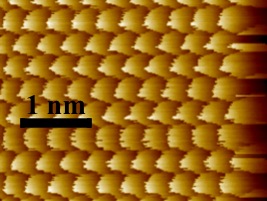Approche quantitative des phénomènes de frottement à méso échelle et à l’échelle atomique par microscopie à force atomique
Abstract : This work is a contribution to better understan the mechanims of energy loss by friction on a molecular scale.The experiments were carried out using an AFM/FFM microscopy and the materials used were lamellar:HOPG,NbSe2 and mica. In the first chapter,an original method was presented concerning the deformation of the piezo electric tube during the image scan to calibrate the microscope and obtain a continious recording of the FL(FN) curve in a full image. In the second chapter,the study of tribological properties at the mesoscale was investigated using scan velocity of about 30¤m/s.In the case of both NbSe2 and HOPG, the friction was probably located between the layers.Measured on the mica, the high constraint was allocate to the large potential of interactions between the layers. The influence of the atmosphere was explained in term of film thickness of the absorbed layer of water, which are more important under air than argon. In the third chapter ,the study of tribological properties was investigated at the atomic scale using scan velocity of about 30nm/sand stick slip mouvement of the tip.The surface of mica was damaged and, for NbSe2 and HOPG, the mesured friction forces had close values those obtained at the mesoscale.Concerning NbSe2, there was no direct influence of the atmosphere. IIn conclusion, thes results were discussed from pre-existing models of friction.At the atomic scale,the proposed dissipative mechanism was based on Tomlinson's model (dissipation of energy in the adiabatic phases). At the mesoscale, this mechanism was based on Postnikovv's model (dissipation by vibration of the system).
Thèses
Soutenue le 23 Novembre 2005 par Philippe BILAS







